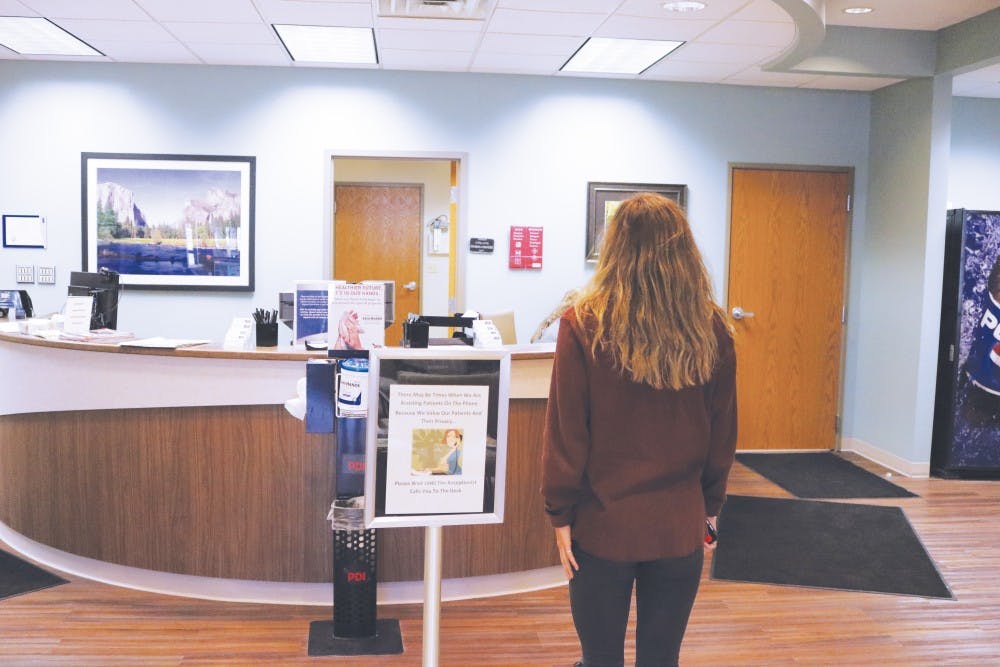Editorial Board | Echo
*See the bottom of this page for facts about Roe V. Wade and New York's Reproductive Health Act.
New York has the highest abortion rate of anywhere in the country.
According to the New York Department of Health, between the years of 2012 and 2014, per every 1,000 live births, there were 400.2 abortions. Even before this law came into effect, abortions were putting up high numbers in New York, especially New York City.
The Center for Disease Control abortion surveillance report shows 58.7% of all abortions in the United States occur when the mother is between 20 and 29 years old. As young adults, this should be a matter we are showing concern for.
91.1 % of all abortions happen when the pregnancy is less than 13 weeks along. The new Reproductive Health Act (RHA) law only has something to do with about 1.3%, as it targets the abortions that happen after 24 weeks. Although this seems like a fairly small number, 638,169 abortions were reported in 2015 by 49 states. This means there were around 5,600 cases in 2015 alone. A little over 20% of these cases were from New York.
There are many misconceptions about this law because it is all over the media. An abortion can still only take place up until the time of birth and there must be a reason, such as the mother's health or well-being or the inability for the fetus to be viable (live outside of the womb).
Governor Andrew Cuomo is the man who signed this act into law this January. Sitting beside him was Sarah Ragle Weddington, the attorney who once represented McCorvey or "Roe."
"It's bittersweet. There is a bitterness because we shouldn't be here in the first place," Cuomo said. "We should not have a federal government that is trying to roll back women's rights … This administration (of President Donald Trump) defies American evolution."
Earlier this year, a Concern for the Unborn group began on Taylor's campus. They met by the Sammy statues and prayed for the unborn at the Link for Life event held in February. This group focuses on learning about abortion and how to advocate for life.
As the editorial board, we believe every life is sacred and begins at conception. Although this law often has had misconceptions concerning who it applies to, we believe God creates life. Taking that away for any reason is not something that should be decided by people.
We believe a lack of fetal viability is not always correct. Also, the fact that nurse practitioners and other physicians can now perform abortions as well as doctors may compromise belief of those practitioners and provide less job opportunity for those against this law. Women's rights and human rights are at odds here. In the spirit of being progressive toward a future where everyone has rights, we believe the unborn fetus is not given its fair chance. Although fetal viability could be in question, the opportunity to live is not even in the question for the child.
Many say those who are pro-life are not fighting the law, but abortion. The editorial board disagrees with that statement because this law makes it easier to have an abortion performed by allowing more medical personnel to perform the abortions and giving mothers more leniency to have a child aborted. This is not to mention the fact that it is no longer guarded by the criminal code, but by public health care.
As a board and as Christians, we advocate for life. This includes the life of a child and the life of the mother, giving them the care they need. We are pro life and stand for every human's rights.
The Facts
Roe V Wade:
This case made abortion legal in 1973. An abortion had to be performed by a licensed doctor, and if it happened after 24 weeks gestation, the reason had to be that the mother's life was at risk. Abortions before 24 weeks were legal, citing the 14th amendment.
"Jane Roe", or Norma McCorvey, her real name, the defendant, wanted an abortion but Texas prohibited the act unless it was to save a woman's life. Before this, abortion was criminalized in most states and dangerous abortions were hurting many women.
"Jane Roe" was pro-choice and pregnant at the time. Her baby girl was adopted and remains unidentified by press. She changed her tune in 1997, when she became a Christian and tried to overturn her own case. It was denied, but she spent the remainder of her life supporting pro-life efforts.
Reproductive Health Act:
The Reproductive Health Act was added into New York law to protect people who are getting abortions from being criminalized for their actions. This has been in the works for a while, but without full Democratic control, the state could not pass the act successfully.
Up until this year, abortion was still considered a criminal act in some cases which made health care professionals wary of providing the service if the woman was more than 24 weeks pregnant.
The act also opens up the act of abortion to various health care professionals. Before, the only people who could perform an abortion were doctors, but this act says nurse practitioners, physician's assistants and licensed midwives are eligible with the right certification. This makes services available to more women.
This new law also makes abortion a public health care issue, instead of part of the criminal code.





